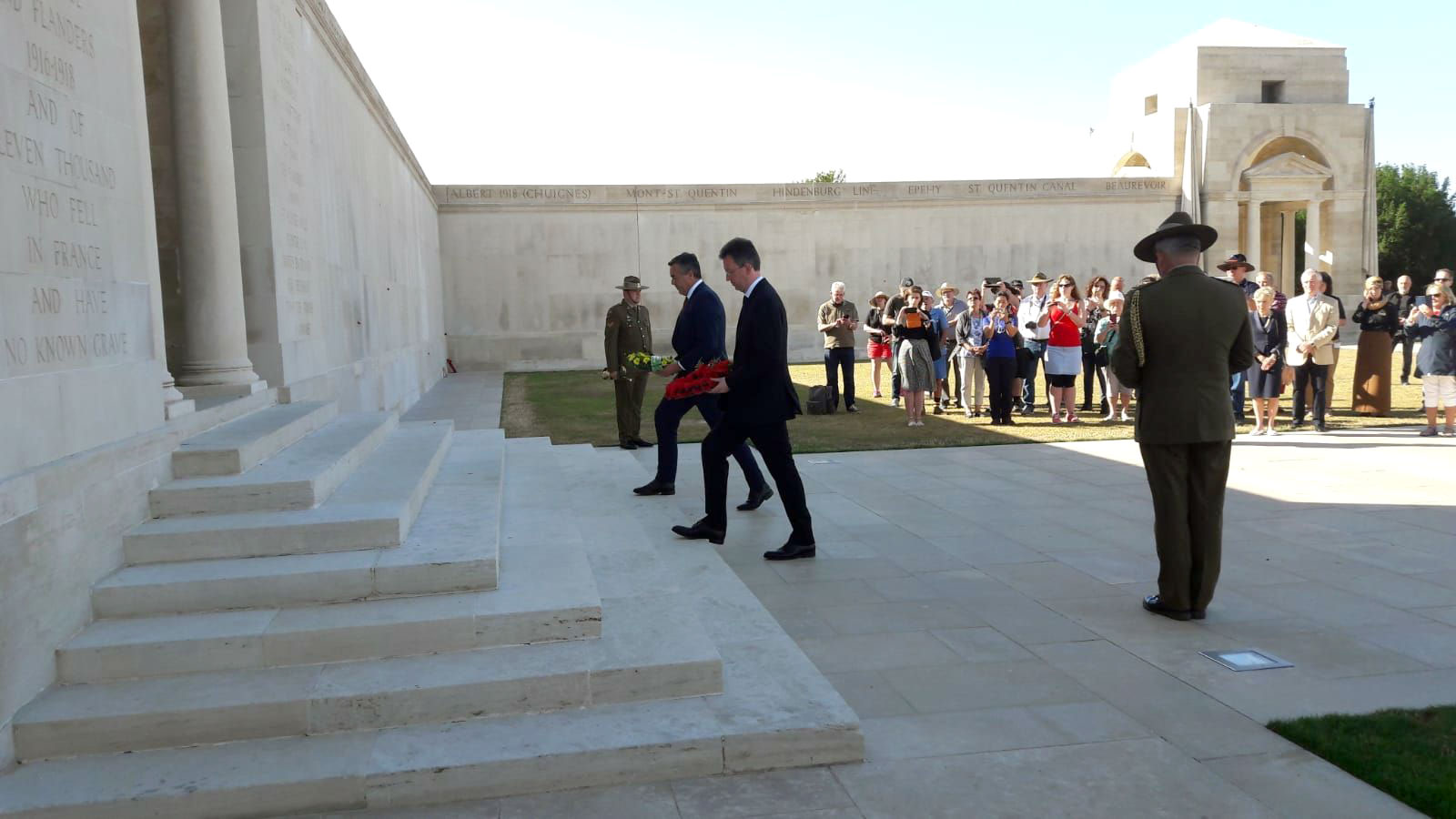One hundred years ago, the Allies launched the largest attack of the First World War east of the French town of Amiens, winning an unprecedented victory on the Western Front and beginning what has become known as the hundred days to the end of the war.
Minister for Veterans Affairs, Darren Chester, last week represented the Australian Government at a commemorative service at the Amiens Cathedral (pictured) in France, and lay a wreath in the Chapel of Allies as a tribute to those who fought and died at the Battle of Amiens.
It is my privilege to honour the some 9000 Allied troops, including close to 2000 Australians who became casualties on August 8, 1918, and remember all those who served, fought and died during the First World War, Mr Chester said.
The victory at Amiens was greater than any other British success of the First World War, and is not only significant for Australians, but for the world, and the service and sacrifice of these soldiers should never be forgotten.
As part of the centenary commemorations, 15 Australian Defence Force Cadets attended the service, taking part in battlefield tours and forming bonds with cadets from each of the participating nations.
The offensive launched outside Amiens on August 8, 1918, was the first time all five Australian infantry divisions attacked together and it ushered in the final phase of the war, leading to the defeat of the German army and the signing of the armistice on November 11 1918, that ended the fighting in the First World War.
The attack on August 8 was one so overwhelming that Erich Ludendorff, the German Chief of Staff, called it the black day of the German army, Mr Chester said.
It signalled the final months of the war during which the Allies maintained the offensive, eventually driving the Germans back to the Hindenburg Line from which their own offensive had been launched in March.
During this phase of the war the Australians fought in a series of battles, most famously at Mont St Quentin and Peronne before fighting their last infantry battle on the Western Front at Montbrehain on October 5, 1918.
As the ANZAC Centenary comes to a close it is important to remember these critical battles at the end of the First World War, but also to recognise a Century of Service commemorating the service and sacrifice of all Australians killed in wars, conflicts and peacekeeping operations.
Of some 450 guns captured by the Australians in the Battle of Amiens, one is the 11-inch artillery piece mounted on a railway carriage that is now on display in the grounds of the Australian War Memorial, Canberra.
Chester lays wreath at Chapel of Allies
